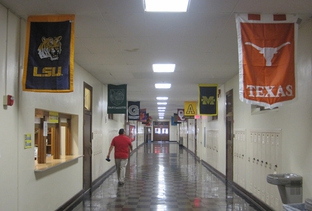School Finance Suit Takes Shape
Within the education community, there have been rumors about a possible school finance lawsuit since well before the legislative session got under way. Now, with $4 billion less in public funding and a daunting new student assessment program on the horizon, those rumors have become a reality.
At least two groups — one led by the Equity Center and another by veteran school finance lawyer David Thompson — have begun gathering plaintiffs to make their case against the state.
No lawsuits have been filed yet. But as of Thursday, 129 districts have joined a coalition of schools led by the Equity Center that intends to sue the state over inequitable public school funding. The districts on the list are a mix of suburban, rural and inner-city schools of varying sizes, though they are primarily low- to middle-funded districts, the school finance lobbying and research organization's spokeswoman Lauren Cook said.
Since the 1949 Gilmer-Aiken Act, which established the first comprehensive system for Texas school funding, seven school finance lawsuits have been filed. There are three prongs to legal wrangling over Texas school finance lawsuits: equity, adequacy and meaningful discretion. They all hinge on two provisions in Texas law — that the state provide equitable, efficient and adequate funding for its public schools and that those schools have "meaningful discretion" in how they spend that money.
The Equity Center lawsuit will focus on the equity angle, attacking the target revenue system established in 2006 when lawmakers reduced the property tax rate and guaranteed that districts would get no less than the amount they received per student at that time. That temporary patchwork approach has since become permanent, resulting in a funding scheme in which neighboring school districts can have as much as a $7,000 difference in state per-student spending.
Thompson's group will focus on the other two prongs, arguing that because the state has not put enough money into public education, it has not given local districts enough choice in how to spend or whether to raise property taxes — in effect, instituting an unconstitutional statewide property tax. About 20 percent of Texas districts have already reached the $1.17 limit, according to an Equity Center analysis. He will also argue that the state increased standards while at the same time drastically reducing funding.
But the difference in focus won’t ultimately matter — all of the plaintiffs will eventually be joined together by the court.
The state's largest district, Houston ISD, has yet to make the decision about whether to join the coalition, a spokesman said. The school board will take up the question at its next meeting on Oct. 13.
When asked how this round of lawsuits will compare to those of the past will compare to those of the past, Thompson made an analogy to the Harry Potter movies.
“There are common characters, common themes, consistent plot thematic issues that run through all the books," he said. "But every one of them has a specific focus."


